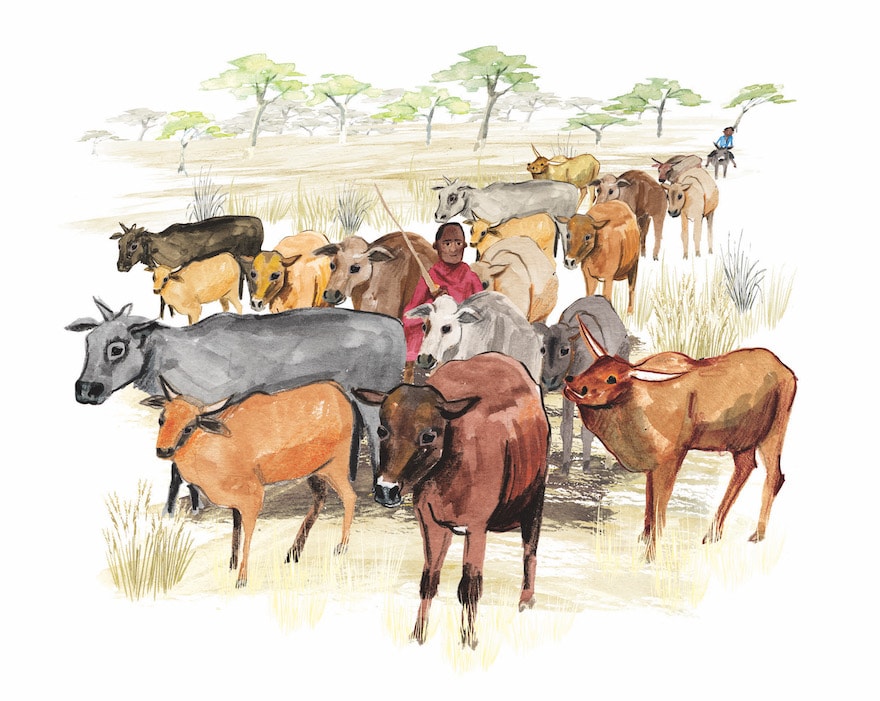Environmental Philanthropy: Stories to Inspire
Working with farmers to restore the land in Zimbabwe
The Tudor Trust has a targeted funding stream supporting agroecology – an ecological approach to farming that allows farmers both to produce food and steward nature – in Africa. Through this initiative, we support various organisations in Zimbabwe (the Njeremoto Institute, Chikukwa Ecological Land Use Community Trust and the TSURO Trust) to implement and share learning around Holistic Land and Livestock Management, or HLLM.
HLLM is a form of ‘holistic grazing management’ whereby farmers rotate where their livestock are grazing to mimic the natural movement and behaviour of wild grazing animals. The approach is much better for the soil and the grassland ecosystem overall than intensive grazing, and it helps communities understand the role livestock can play in regenerating rangelands. It then gives them tools to plan their grazing so that they minimise over-grazing – often livestock do not return to the same place for ninety days or more. The approach also uses cattle hooves to break capping on the soil. All this, in turn, means more penetration by rain into the soil, less danger to the farmer of drought and healthier grassland ecosystems.
Tudor has been supporting this work in Zimbabwe since 2012 and we have been really impressed with the uptake and learning by farmers. Since the approach requires them to put their livestock into a joint herd with other farmers, deep community engagement is essential, so that community members have a good understanding of the benefits. The approach is spreading fast around the world on individually owned ranches, but it is more complex working in situations with multiple livestock owners. This work in Zimbabwe shows it can be done. There are benefits of joint herding – not least that it enables small-scale farmers to move from the time-intensive herding of small numbers of livestock every day to only herding when it is their turn with the joint herd.
Our experience is that although the practice of community-led HLLM takes time to set up, particularly when co-herding is involved, farmers adopt it because the benefits are plain to see. For example, the improved grazing areas are already visible from a distance and the participating farmers experienced reduced cattle losses in the 2016/2017 droughts. The approach has the potential to secure livelihoods in farming communities whilst making a significant contribution towards greenhouse gas emission reduction. That’s because the HLLM practices encourage greater soil cover and biodiversity (rather than the bare ground typical of over-grazing), resulting in increased carbon capture.
Tudor has been pleased to have been able to play a small part in an initiative that benefits communities and nature at the same time. We’ve learned a lot from funding this work, too, about the importance of sticking to an initiative and taking the time to build a trusting relationship with your partners. Funders must be led by the insights of organisations on the ground. In our case, the initial phase of mobilising the community and addressing cultural norms on grazing took time and required patience, on both our part and that of the community. But over time Tudor has become convinced by the pioneering approach and we have started to look to support other HLLM work elsewhere in Zimbabwe too.
* This amount was contributed over seven years towards the Holistic Land and Livestock Management (HLLM) outreach programme with farmers in the Shurungwi and Chivi districts of Zimbabwe. Tudor has also provided further support to take the HLLM work forward elsewhere in Zimbabwe.
